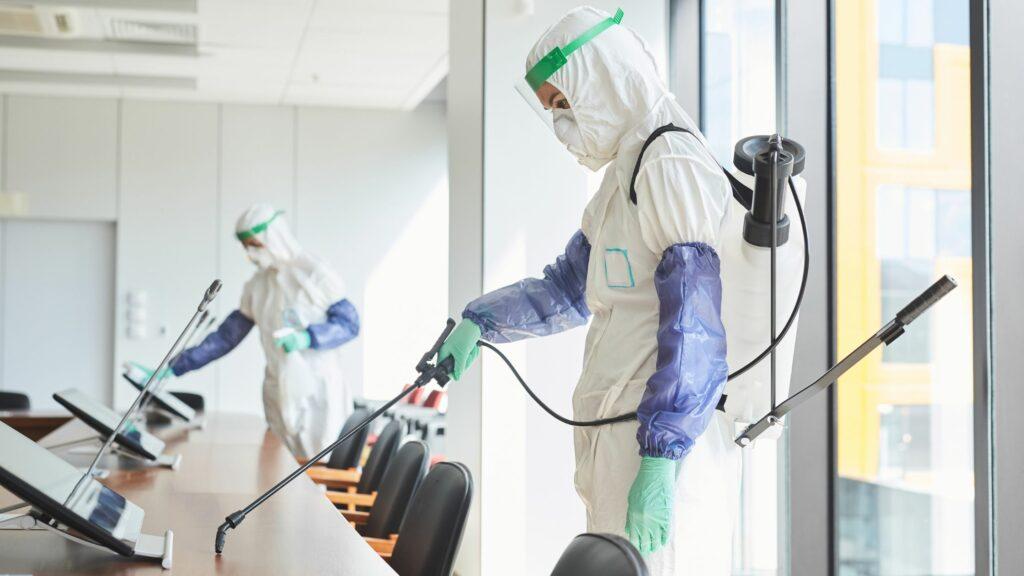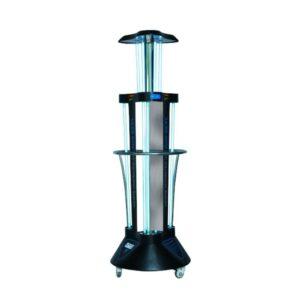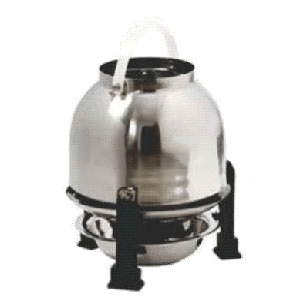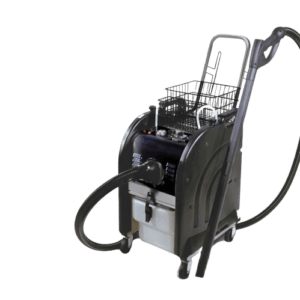In our fast paced world it is more important than ever to prioritize cleanliness and hygiene in our surroundings. With the constant threat of germs and pathogens lurking on surfaces, effective surface disinfection systems have become indispensable.
But what exactly are surface disinfection systems and how do they work? In this comprehensive guide we will delve into the world of surface disinfection and explore various types of disinfection methods. We will also discuss their applications in different industries and the importance of surface disinfection in specific settings such as hospitals, offices, schools, and public areas.
Throughout this blog, we will provide valuable insights into mastering proper surface disinfection techniques, prioritizing safety during the disinfection process, and understanding the significance of validation to ensure the effectiveness of disinfection practices. So, let’s embark on this journey to discover the power of surface disinfection systems and their impact on health and hygiene.
Understanding Surface Disinfection Systems
Surface disinfection systems refer to devices or methods used to eliminate or reduce the presence of pathogens such as bacteria viruses and fungi on various surfaces. These systems are designed to provide effective disinfection and hygiene measures in various settings including healthcare facilities laboratories food processing plants schools offices and public spaces.
Surface disinfection systems typically employ different techniques and technologies to achieve their objectives. The selection of a surface disinfection system depends on factors such as the type of pathogens targeted the size and layout of the area to be disinfected the level of disinfection required and the safety considerations for the specific environment. Proper training and adherence to manufacturer guidelines are crucial to ensure effective and safe use of these systems.
Types of Surface Disinfection Systems
There are several types of surface disinfection systems available each utilizing different technologies and methods to eliminate or reduce pathogens on surfaces. Here are some common types:
- Chemical Disinfection Systems: These systems use disinfectant chemicals to kill or inactivate microorganisms. Disinfectants can be applied through sprayers, wipes, or fogging devices. Common disinfectants include chlorine compounds quaternary ammonium compounds hydrogen peroxide and alcohol-based solutions.
- Ultraviolet (UV) Disinfection Systems: UV-C light is effective at inactivating microorganisms by damaging their DNA or RNA. UV disinfection systems utilize UV-C lamps to irradiate surfaces and kill or deactivate pathogens. These systems are commonly used in healthcare facilities laboratories and water treatment plants.
- Electrostatic Disinfection Systems: Electrostatic sprayers apply disinfectant solutions as charged particles. The charged droplets are attracted to surfaces and evenly coat them, providing more thorough coverage and reducing waste. This method is particularly effective for large areas and hard to reach surfaces.
- Ozone Disinfection Systems: Ozone is a powerful oxidizing agent that can destroy microorganisms on contact. Ozone disinfection systems generate ozone gas, which can be applied to surfaces through sprayers or by filling a sealed space with ozone. These systems are used in various settings including water treatment food processing and HVAC systems.
- Hydrogen Peroxide Vapor Systems: These systems use hydrogen peroxide vapor to disinfect surfaces. The vapor is released into a sealed space, where it penetrates and eliminates pathogens. Hydrogen peroxide vapor systems are commonly used in healthcare settings and laboratory environments.
- Chlorine Dioxide Disinfection Systems: Chlorine dioxide is a highly effective disinfectant that is commonly applied through fogging devices or sprayers. Chlorine dioxide disinfection systems are used in healthcare, food processing, and water treatment applications.
- Automated Disinfection Robots: These are autonomous or semi-autonomous robotic devices equipped with disinfection capabilities. They are designed to navigate and disinfect surfaces in a given area. These robots may use different technologies, such as UV-C lights, chemical sprayers, or a combination of both.
Applications of Surface Disinfection System
Surface disinfection systems have a wide range of applications across various industries and settings. Here are some common applications:
- Healthcare Facilities: Surface disinfection systems are extensively used in hospitals clinics and healthcare facilities to prevent the spread of healthcare associated infections. They are used to disinfect patient rooms operating rooms medical equipment and high-touch surfaces like doorknobs handrails and countertops.
- Food Processing and Food Service: In the food industry, surface disinfection systems play a crucial role in maintaining food safety and preventing contamination. They are used to disinfect food preparation surfaces equipment utensils and processing areas to ensure the elimination of harmful bacteria viruses and other pathogens.
- Laboratories: Laboratories require stringent hygiene measures to maintain sterile and clean environments. Surface disinfection systems are used to disinfect laboratory benches, hoods, equipment, and other surfaces to prevent cross-contamination and maintain the integrity of experiments and research.
- Public Spaces and Transportation: Public spaces such as airports, train stations, shopping malls, and public transportation vehicles are prone to high foot traffic and potential contamination. Surface disinfection systems are used to sanitize surfaces like seating areas, handrails, ticket counters, and restrooms to minimize the spread of pathogens.
- Schools and Educational Institutions: Educational settings, including schools and universities, can benefit from surface disinfection systems to maintain a healthy learning environment. These systems are used to disinfect classrooms, desks, chairs, library resources, and other frequently touched surfaces to reduce the risk of infectious diseases.
- Hospitality Industry: Hotels, resorts, and other accommodations utilize surface disinfection systems to ensure the cleanliness and safety of guest rooms, common areas, and amenities. Disinfecting surfaces like bedding, bathrooms, door handles, and fitness facilities help provide a hygienic environment for guests.
- Office Spaces: Surface disinfection systems are employed in offices to promote a healthy workspace. Disinfecting shared workstations, conference rooms, break areas, and high-touch surfaces like keyboards, telephones, and elevator buttons helps prevent the spread of illnesses among employees.
- Residential Settings: Surface disinfection systems can be used in residential settings, particularly during outbreaks or for individuals with compromised immune systems. Disinfecting surfaces like countertops doorknobs light switches and bathroom fixtures can help reduce the risk of infections.
Best Practices of Surface Disinfection System
The best Practices of Surface Disinfection Systems are:
- Proper Surface Disinfection: Effective surface disinfection requires proper techniques and adherence to recommended protocols. It is essential to thoroughly clean surfaces before applying disinfectants to remove dirt, debris, and organic matter. Follow the instructions provided by the manufacturer for the correct application of disinfectants, including proper dilution ratios and contact times.
- Time and Frequency of Disinfection: The frequency of surface disinfection depends on the level of risk and the specific environment. High-touch surfaces and areas with increased potential for contamination should be disinfected more frequently. Establish a regular disinfection schedule that ensures surfaces are adequately disinfected at appropriate intervals. Consider factors such as foot traffic, the presence of sick individuals, and the nature of the setting.
- Surface Disinfection Protocols: Develop and implement surface disinfection protocols that outline specific procedures and responsibilities. Train staff members on proper disinfection techniques, including correct use of equipment and solutions, adherence to contact times, and appropriate personal protective equipment (PPE) usage. Regularly review and update protocols based on the latest guidelines and recommendations.
- Use Appropriate Disinfectants: Select disinfectants that are appropriate for the target pathogens and the surfaces to be treated. Different disinfectants have varying efficacy against specific microorganisms. Ensure the disinfectant is registered and approved by regulatory agencies for the intended use. Follow the manufacturer’s instructions regarding proper storage, handling, and disposal of disinfectant solutions.
- Adequate Ventilation: Proper ventilation is important during and after surface disinfection. Adequate airflow helps disperse any residual fumes or vapors from disinfectants and promotes drying of the surfaces. Open windows, use fans, or activate ventilation systems to ensure proper air circulation during and after the disinfection process.
- Personal Protective Equipment or PPE: When using disinfectants it is important to use appropriate PPE to protect the individuals performing the disinfection. This may include gloves goggles masks or aprons depending on the type of disinfectant and the potential for splashes or aerosols. Follow safety guidelines and recommendations for the specific disinfection products being used.
- Regular Monitoring and Evaluation: Establish a system to monitor and evaluate the effectiveness of surface disinfection. This can include routine inspections, environmental sampling, or feedback from staff and occupants. Regularly assess the efficacy of the disinfection process to identify any potential gaps or areas for improvement.
- Communication and Education: Promote awareness and educate staff, occupants, or users of the space about the importance of surface disinfection. Provide clear instructions and guidelines on hygiene practices, hand hygiene, and proper use of disinfection equipment. Encourage individuals to report any concerns or issues related to surface cleanliness and disinfection.
Safety Considerations While Using Surface Disinfection System
Safety Considerations While Using Surface Disinfection System are:
- Surface Disinfection and Safety: Ensure that the area being disinfected is properly ventilated to minimize the concentration of disinfectant fumes or vapors. Adequate ventilation helps disperse any residual chemicals and promotes a safe environment for both users and occupants.
- Personal Protective Equipment (PPE): Use appropriate PPE when handling and applying disinfectants to protect against potential hazards. This may include gloves, goggles, masks, or aprons, depending on the specific disinfectant being used. Follow the manufacturer’s instructions and safety data sheets (SDS) for the recommended PPE for each disinfectant.
- Disinfection Validation: Regularly validate the effectiveness of the disinfection process to ensure it is achieving the desired outcomes. Use appropriate methods such as environmental sampling, surface swabbing, or ATP testing to assess the efficacy of disinfection. Validation helps identify any potential gaps or areas for improvement in the disinfection protocols.
- Hazardous Chemicals in Disinfectants: Be aware of the potential hazards associated with disinfectant chemicals. Read and understand the SDS provided by the manufacturer, which contains important safety information, handling instructions, and first aid measures. Some disinfectants may be corrosive toxic or flammable and precautions should be taken to minimize risks.
- Disinfection Training and Education: Provide comprehensive training and education to individuals responsible for performing surface disinfection. This includes proper handling and application of disinfectants, understanding safety protocols, and recognizing potential hazards. Ensure that staff members are aware of emergency procedures, spill management, and proper disposal of disinfectant waste.
- Dilution and Mixing: Follow the manufacturer’s instructions regarding proper dilution ratios and mixing procedures. Avoid mixing different disinfectants unless specifically recommended, as incompatible chemicals can produce hazardous reactions. Use designated containers and equipment for preparing and storing disinfectant solutions.
- Spill Management and Clean-up: Establish procedures for handling disinfectant spills or accidents. Have appropriate spill kits readily available and train staff on proper clean-up protocols. Follow guidelines for containment, neutralization, and disposal of disinfectant spills in a safe and responsible manner.
- Communication and Labeling: Clearly label containers of disinfectants with the name of the product, hazard warnings, and any necessary precautionary statements. Communicate information about disinfection activities, potential hazards, and safety protocols to staff, occupants, or users of the space.
Maintenance and Support of Surface Disinfection System
Maintenance and Support of Surface Disinfection System include:
- Surface Disinfection System Maintenance: Regular maintenance of surface disinfection systems is crucial to ensure their optimal performance and longevity. Follow the manufacturer’s recommended maintenance procedures, which may include cleaning, inspection, and calibration of the equipment. Regularly check for any signs of wear or damage, and promptly address any issues identified.
- Service and Repair for Disinfection Systems: In case of equipment malfunction or breakdown it is important to have access to reliable service and repair options. Engage with authorized service providers or contact the manufacturer for assistance. Follow the recommended service intervals and ensure that trained technicians perform any repairs or maintenance tasks.
- Spare Parts and Accessories: Maintain an inventory of essential spare parts and accessories specific to your surface disinfection system. This ensures that replacements can be quickly made, minimizing downtime and ensuring uninterrupted disinfection operations. Consult with the manufacturer or authorized suppliers to obtain genuine spare parts and accessories.
- Calibration and Validation: Periodically calibrate and validate the disinfection system to ensure it is operating at the desired efficacy. Calibration may involve checking and adjusting parameters such as spray volume, UV-C output, or other relevant factors. Validation procedures, such as environmental sampling or surface swabbing, can verify the effectiveness of the disinfection process.
- Documentation and Record-Keeping: Maintain detailed records of maintenance activities, repairs, calibrations, and any relevant documentation associated with the surface disinfection system. This helps track the system’s performance, identifies trends, and ensures compliance with regulations and guidelines. Documenting maintenance activities also assist in warranty claims and troubleshooting processes.
- User Support and Training: Ensure that users of the surface disinfection system receive proper support and training. This includes initial training on equipment operation, maintenance procedures, and troubleshooting. Ongoing support should be available to address any questions or concerns that arise during system use.
- System Upgrades and Technology Advancements: Stay informed about any system upgrades or advancements in surface disinfection technology. Manufacturers may release updates or improved models that offer enhanced features or capabilities. Regularly assess the performance and efficiency of your disinfection system and consider upgrading or replacing it when necessary.
Surface Disinfection System From Leading Indian Manufacturers
Raze CoV
The Raze CoV UV-C disinfection system manufactured by Ibis Medical Equipment and Systems Private Limited is a highly effective solution for eliminating hospital-acquired infections (HAI). By utilizing UV light, the Raze CoV sterilizes surfaces by deactivating the DNA and RNA of bacteria, viruses, and other microorganisms. This mobile and durable system guarantees 100% sanitization, while being nature conservative, odor-free, and corrosion-free. Additionally, it is a consumables-free solution, making it cost-effective and environmentally friendly.
Multipurpose Portable Fumigator
Dynamic International, a leading manufacturer and global supplier of surface disinfection systems, presents the Multipurpose Portable Fumigator. This equipment offers versatile functionality as a disinfectant, humidifier, clematis, atomizer, and insect repellent spray. It requires no additional heat or catalyst to spray the aerosol mist, making it safe and cost-effective. The system eliminates the need for a separate humidity system and allows for the safe use of various disinfectants such as Formalin, Dettol, Savlon, Servocid, Phenol, and more.
Anand Steam
Anand Medicaids Private Limited, a renowned manufacturer and global supplier of sterilization equipment, introduces Anand Steam. This steam-based surface disinfection system utilizes low-pressure saturated steam at a high temperature of approximately 180°C to safely clean surfaces. With automatic filling for endless operation and in-line dosing capability for the sanitizing solution, Anand Steam ensures maximum effectiveness. Equipped with a stainless steel carrying handle, anti-tracking wheels, and steam flow regulation, it offers convenience and ease of use. The system includes safety features such as visual warnings and automatic shut-off when the external tank runs out of water.
Introducing Medzell: A Futuristic B2B Platform for Indian Medical Devices
Medzell is a next-generation B2B platform boosting Indian medical devices in emerging markets. Medzell provides a comprehensive range of high-quality Surface Disinfection System from reputable manufacturers, ensuring you have access to the latest advancements.
Medzell connects healthcare providers, distributors, and consumers, offering a seamless procurement experience for Surface Disinfection Systems and other medical devices. With its user-friendly interface, vast product catalog, and transparent pricing, Medzell simplifies the process of sourcing Surface Disinfection Systems, making it easier for individuals to find the perfect device for their needs.
Conclusion
Surface disinfection systems play a vital role in maintaining health promoting hygiene and preventing the spread of infections. Whether through UV surface disinfection, chemical disinfection, electrostatic disinfection, or automated disinfection, these systems offer effective solutions for eliminating germs and pathogens from surfaces.
Understanding the different surface disinfection methods, their benefits, and their applications is essential for implementing effective disinfection protocols. Regular training, adherence to guidelines, and validation of disinfection practices ensure the highest standards of cleanliness and hygiene.
By embracing the power of surface disinfection systems, we can create safer environments, protect our health, and promote overall well-being for everyone





